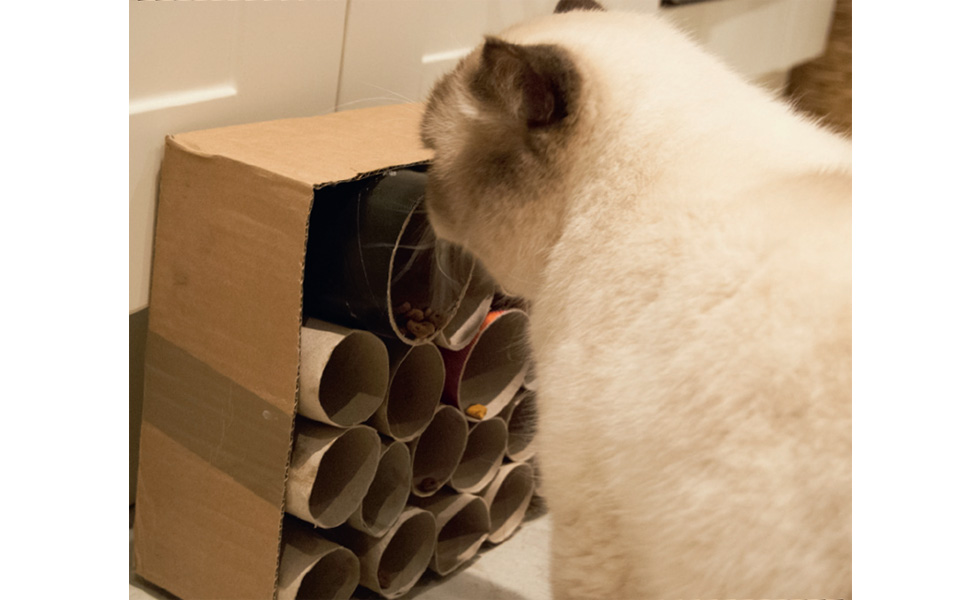1. Age-Appropriate Diets
Cats progress through three life stages:
- Kitten
- Adult/maintenance years
- Senior
Your cat’s place in the life stage is a big factor in determining the best diet plan. Food for your cat should be formulated to meet the nutritional requirements of the specific age, with consideration given to any other potential health issues.
- Kittens need a diet that is high in protein and fat to develop strong bones, teeth and muscles. Kittens are more active than older cats and convert calories quickly into energy.
- Adult cats should have a lower-calorie diet with considerations of weight control. Being overweight, just as with humans, can lead to diseases such as arthritis, heart disease and diabetes as cat ages. Unless an adult cat is pregnant or nursing, it will not require the calorie content and higher protein/fat diet consumed by a kitten.
- Senior cats are typically more sedentary and need a low-fat diet with highly digestible proteins to ease the processing burden on their kidneys.
2. It’s All on the Label
A healthy diet is your cat’s best defense for a long life that is free of disease. A cat’s nutritional requirements are relatively simple. Read the labels on your food choice. These basic ingredients should be listed at the top:
- Protein from an identified meat, fish or poultry source (look for “beef,” “lamb,” “turkey,” ”chicken,” “tuna” — not just “meat” or “meat product”)
- Taurine, an essential amino acid
- Vitamins, minerals, enzymes, fatty acids
- Water
Preservatives are necessary to keep the food fresh. Fillers such as corn, wheat, rice, colorings, binders and flavors are added to both dry and canned cat food by the manufacturers to provide bulk and satisfy consumers. Better-quality brands will have fewer artificial preservatives and cheap fillers.
Always check the expiration date on the package, and look for a brand that meets or exceeds AAFCO standards.
Ingredients to avoid:
- “Byproducts,” “meat and/or bone meal” and “animal digest”
- Added sugars
- Potentially dangerous chemical preservatives such as BHA, BHT, ethoxyquin and propyl gallate
- Corn meal
- Excessive carbohydrate fillers (dry cat food may contain as much as 50 percent grain)
3. Variety Is the Spice of Life
Many feline nutritionists recommend a mixture of canned and dry food for cats. Dry food is convenient and may be left out for “self-feeding.” Canned food provides variety and contains water. Since cats may not drink water regularly, canned food provides a convenient (and yummy, for them) source of additional hydration. Canned food should be consumed quickly, and it spoils within a day without refrigeration. Even when you do refrigerate an open can of cat food, throw it out after three days to avoid bacterial contamination.
Rotating food choices will keep your cat from becoming bored with the same daily meal routine. Since different formulations of cat food recipes contain a range of minerals and vitamins, alternating food choices may provide your cat with a more balanced diet.
4. Vegan Cats? Raw Foodist Felines?
Cats are obligate carnivores, and they must have protein derived from a meat, fish or poultry source to survive. In the wild, the primary grains cats ingest are from the contents of their prey’s stomach. A vegan, or even vegetarian, diet for your cat is not a healthy option.
Meanwhile, some pet owners ask about the health benefits of feeding raw diets. Because it is time-consuming and expensive, preparing raw pet food it is not a workable solution for many. Fear not: A number of companies manufacture balanced raw cat foods. Among them:
Nature’s Variety Instinct,
Raw Kitty and more. Always ensure the diet meets or exceeds AAFCO standards.
5. Is It OK If My Cat Eats Dog Food?
There may be the occasion when cats and dogs coexist that a food exchange will occur. In the event your cat nibbles your dog’s food, do not worry. It will not hurt your feline to feed from the dog bowl — assuming the dog is agreeable. On a regular basis however, it is not a recommended feeding plan.
A cat’s nutritional requirements are much different from a dog’s. Your cat needs more protein than dog food provides. Vitamin and mineral supplements in quality cat food are also essential to a balanced diet. For example, the amino acid taurine is not added to dog food, because a dog’s system produces an ample supply.
If your cat is eating dog food entirely, she will become deficient in many nutrients that are critical to her good health and may lead to serious, life-threatening illnesses. Stick to a cat food that is manufactured for the nutritional values of felines, and you and your pet will both benefit.
